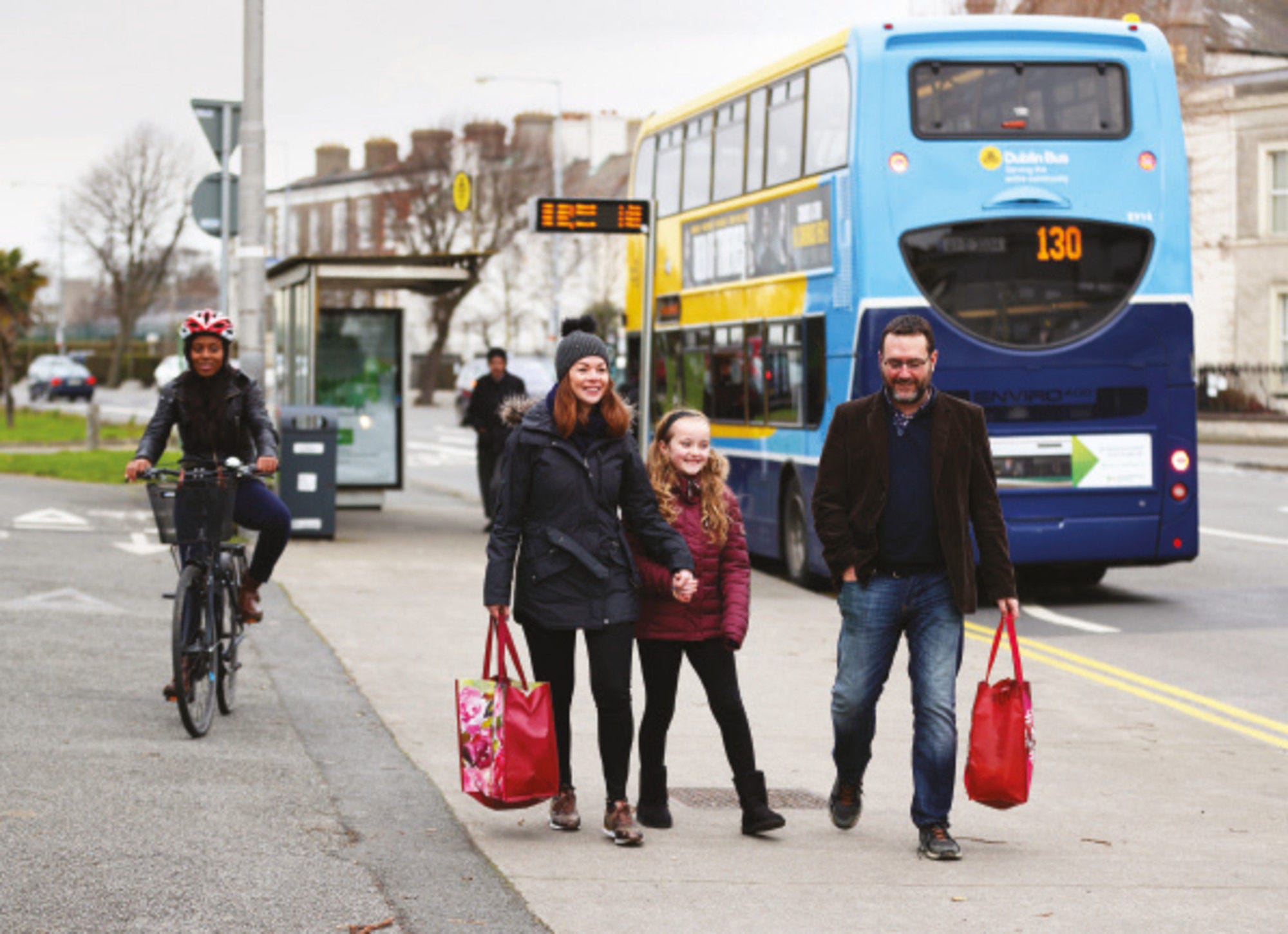This report builds on the OECD Well-being Framework and applies a new perspective that analyses synergies and trade-offs between climate change mitigation and broader goals such as health, education, jobs, as well as wider environmental quality and the resources needed to sustain our livelihoods through time. This report takes an explicitly political economy approach to the low-emissions transitions needed across five economic sectors (electricity, heavy industry, residential, surface transport, and agriculture) that are responsible for more than 60% of global greenhouse gas emissions. Synergies between emissions reduction and broader well-being objectives, such as reduced air pollution and improved health, increase the incentives for early mitigation action. At the same time, the impact of climate policies on issues such as the affordability of energy and jobs need to be taken into account to counter growing economic and social inequalities within and between countries. The report argues that reframing climate policies using a well-being lens is necessary for making visible such synergies and trade-offs; allowing decision-makers to increase the former and anticipate, manage and minimise the latter. This requires us to rethink societal goals in terms of well-being, reframe our measures of progress and refocus policy-making accordingly.
Accelerating Climate Action

Abstract
Executive Summary
General approach
Climate change is an urgent and unprecedented challenge with far reaching implications and it is happening now. The world has already warmed by an average of 1°Celsius relative to pre-industrial temperatures and July 2019 was the hottest July ever recorded. Ice sheets are melting and sea level rising. Extreme weather events exacerbated by climate change are already taking their toll across the globe and will only become more frequent and more intense as a result of inaction. To limit global warming to well-below 2°C and towards 1.5°C, a key aim of the Paris Agreement will require a significant scaling up and acceleration of action by governments and other stakeholders.
Delaying such action will lead to the further locking-in of highly emitting infrastructures and systems and increase severity of future climate impacts. In advance of 2020, many countries are looking to increase the ambition of their national actions contributing to the goals of the Paris Agreement. Yet they also face other pressing challenges. Unless carefully designed, climate policy action may therefore unintentionally exacerbate some of these problems thereby slowing down progress in reducing emissions. Conversely, where climate action can also help address other societal challenges, such as air pollution, health, or equity there may be potential to further accelerate climate change mitigation action.
Systematically putting people’s well-being at the centre of decision-making is therefore key to creating the social and political support needed for more ambitious climate action. This report investigates the potential advantages of adopting a well-being lens to climate mitigation policies. It focuses on five major sectors of the economy (electricity generation, heavy industry, residential, surface transport1 and agriculture), to identify key synergies and trade-offs between climate change mitigation and broader well-being outcomes.
The OECD’s well-being framework provides a comprehensive approach to the determinants of both current and future well-being, beyond such aggregate measures such as GDP. It encompasses multiple dimensions, such as income, jobs, health, knowledge and skills, safety and the quality of the environment, as well as the economic, natural, human and social capital stocks needed to sustain well-being over time. Adopting a well-being lens means that climate and well-being goals should not be pursued independently. Specifically, it means that: (i) policy goals should be defined in terms of well-being outcomes (including the risks and impacts of climate change) and are systematically reflected in decision-making across the economy; (ii) decisions should be taken consider multiple well-being objectives, rather than focusing on a single (or very narrow) range of objective(s) independently of others; and (iii) the interrelations between the different economic sectors and systems in which a policy intervenes are sufficiently well understood
Applying a well-being lens when designing climate mitigation policies has the potential to deliver wider well-being benefits both in the short and the long term. One example relates to the synergies between simultaneously reducing air pollution and GHG emissions. Reducing the combustion of fossil fuels would cut carbon dioxide (CO2) emissions, but also the related particulate matter and other chemical compounds yielding climate air quality and health benefits. Opportunities for enlarging the synergies between climate and well-being outcomes can be found in all the sectors considered. Identifying and quantifying these synergies – sometimes through new metrics and indicators – is key to designing policies and investments that could realise these benefits.
A well-being lens can also help to highlight where significant trade-offs may exist between climate and well-being objectives. As such trade are sometimes hard to avoid, it is crucial to anticipate them in order to address them. Pricing policies aiming at reflecting the social costs of different activities, such as burning fossil fuels for heat or transport, may have damaging distributional impacts. Decision makers need to assess whether these trade-offs are material, perhaps even sufficiently important to jeopardise the feasibility of such policy measures. Where this is the case, such concerns can be addressed through targeted compensation (e.g. free emission allowances for emissions intensive firms) or the provision of suitable alternatives (e.g. public transport as a substitute for private vehicle use). By considering potential trade-offs early in the decision-making process, policy makers can design policies in order to reduce unwanted impacts, particularly distributional impacts, and thereby avoid the risk that policies will be rolled back in the future.
A well-being approach calls for a reframing of the measurement system around well-being outcomes. A broader set of indicators to track performance and guide decision-making is presented and discussed for every sector considered. They include SDG indicators and indicators from the OECD well-being framework.
Sectoral application
Electricity is central to people’s well-being as it delivers a broad range of basic services, economic infrastructure and activities. However, the combustion of fossil fuels for electricity generation is not only the largest contributor to GHG emissions globally, but is also damaging to human health and environmental quality. Adopting a well-being lens to this sector implies to go beyond the traditional objectives of the energy trilemma (affordability, reliability and decarbonisation), also accounting for objectives such as public health and safety, preservation of ecosystems and provision of high-quality employment. Adopting a well-being lens also means taking a systematic view of the entire power system, including the plant level, the network infrastructure and the demand side. Such a holistic approach enables policy makers to identify and exploit synergies between mitigation and other well-being priorities (e.g. reduced pollution from coal plants and coal mines) while managing the trade-offs (e.g. supporting coal-dependent regions and workers in the transition), increasing the social and political acceptability of climate action. Systematically measuring all areas of electricity-related well-being using the appropriate set of indicators (e.g. on health, jobs, ecosystems) is key for identifying the many synergies and trade-offs while enabling better targeted policies, for example by adopting indicators that better identify households at risk of energy poverty to effectively address potential energy affordability problems.
A shift of focus in heavy industry is also crucial for climate. Heavy industries produce the materials and chemicals that we need for our daily lives: for infrastructure, housing, vehicles, packaging, fertilisers, and so on. However, it is important that decisions are not focused only on maximising production to meet the demands of a growing population; they need to address the harmful effects of current industrial production on the air we breathe, soil and water quality and on natural resources, as well as the need to reduce GHG emissions. This requires that heavy industries over time decarbonise their production, adopting circular and resource-efficient processes and engaging in RD&D to overcome the technological and commercial obstacles to decarbonising some processes. This transition to sustainable production would be facilitated by the development and monitoring of indicators that show whether production is increasing at the expense of air, land, water, soil and materials pollution and climate stability.
Buildings generate 27% of global CO2 emissions in 2017, with the residential sector accounting for 60% of these. However, targeting the dwelling – in itself - is insufficient to reach ambitious climate reductions in the sector. Recognising that housing is a “bundled good” is essential to reaping greater emission reductions, for example, in order to identify opportunities for integrating the location of housing with existing natural and manmade infrastructure.,. It would also enhance synergies between climate and people’s immediate well-being. For instance, housing developments that are transit-friendly, provide educational, leisure and employment facilities and safer streets while mitigating GHG emissions.
Re-designing mobility systems around accessibility, instead of physical movement, is key to invert the current growth in car ownership and use, and related GHG emissions from transport (now accounting for approximately 23% of global CO2 emissions). Accessibility is a combination of mobility and proximity, i.e. ensuring that people are able to easily reach jobs, opportunities, goods, services and amenities. Enhancing accessibility by giving priority to sustainable modes and creating proximity between people and places can importantly contribute (along with the improvement of vehicle technologies and fuels) to enlarging mitigation potential, while also improving life quality through delivering better equity, health, economic, road safety, and wider environmental outcomes. Such an approach will lead to a redistribution of budgets and public space that is better aligned with climate and wider well-being goals. Developing and using the right indicators to articulate the shift in focus towards accessibility is an important step, which has already supported some cities for planning transport networks and city development. This would be usefully supplemented by criteria on safety and security, as well as air quality.
Agriculture and the food sector comprise nearly 30% of global GHG emissions. They also impact on the feasibility of stringent global mitigation goals through their impact on land-use (e.g. deforestation to expand production) and by the potential to sequester carbon in plants and soils. Economic criteria (GDP, trade and farmers’ livelihoods) are currently the main drivers for decisions in agriculture and associated food systems. Integrating wider social objectives as priorities is key for current and future well-being, as the way food systems are shaped strongly affects people’s health, the environment (water and air quality) and natural resources (water resources). More particularly, when shaping climate mitigation policies in the agriculture and food sector, a strong focus should be made on providing a healthy diet for a growing global population. This key challenge can only be answered by a full endorsement from all actors of the food system, including consumers. Dietary changes and the reduction of food loss and waste, for instance, have the potential to mitigate GHG emissions from agriculture, improve people’s health, food security and the environment. These benefits can only be reached with the collaboration of stakeholders and consumers.
Note
← 1. For the purposes of this document, “surface transport” includes road and rail transport, walking, cycling, and public transport (including overground and underground metro systems). Maritime transport is excluded.



